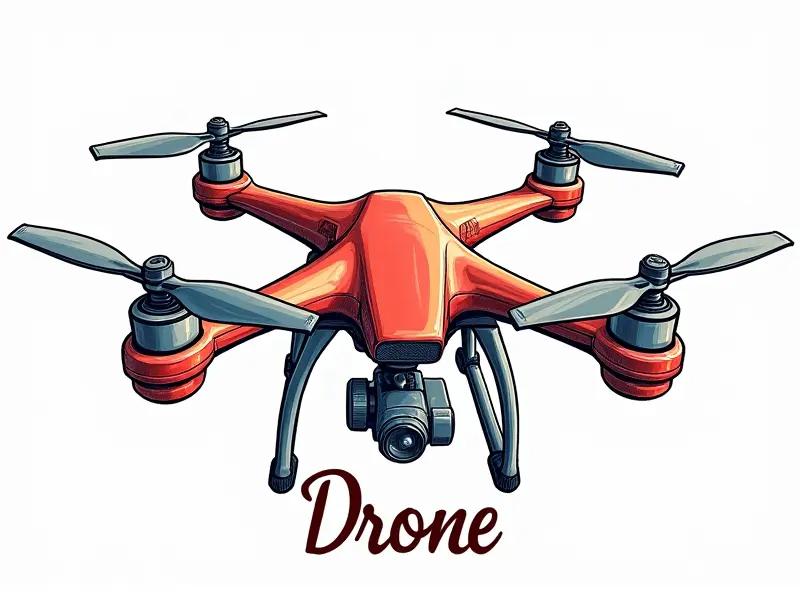What are drone racing rules?

Drone racing is an exhilarating sport that combines technology, speed, and skill. As the popularity of FPV (First Person View) drone racing continues to grow, understanding the rules and regulations becomes crucial for both beginners and seasoned racers. This article delves into the essential guidelines, safety measures, and competition rules that govern this fast-paced hobby.
Essential Drone Racing Rules Explained
The core of any competitive drone racing event revolves around a set of fundamental rules designed to ensure fair play and safety for all participants. These rules typically cover aspects such as flight zones, race formats, penalties, and equipment specifications.
- Flight Zones: Designated areas where drones are allowed to fly during races must be clearly marked and communicated to all racers beforehand.
- Race Formats: Different types of races (e.g., sprint, endurance) have specific rules regarding lap counts, start procedures, and finish lines.
- Penalties: Violations such as crossing the boundary line or interfering with other racers result in penalties like time additions or disqualification.
- Equipment Specifications: Drones must meet certain weight limits, camera quality standards, and propeller sizes to ensure a level playing field.
Top 5 Must-Know FPV Racing Laws
To excel in drone racing competitions, it's essential to familiarize yourself with the top five laws that govern this sport:
- Airspace Regulations: Adhering to local airspace regulations is paramount. This includes obtaining necessary permits and avoiding restricted areas.
- Safety Protocols: Implementing safety measures such as wearing helmets, using protective gear, and conducting pre-flight checks can prevent accidents.
- Communication Standards: Clear communication between pilots and ground crew is crucial for coordinating race activities effectively.
- Ethical Conduct: Respecting fellow racers, officials, and spectators fosters a positive community environment.
- Data Privacy: Protecting personal information shared during competitions ensures the security of participants' data.
Beginner's Guide to Drone Race Regulations
For newcomers to drone racing, navigating through regulations can be daunting. Here’s a simplified guide to help you get started:
- Register with Local Clubs: Joining local FPV clubs provides access to experienced mentors and resources.
- Familiarize Yourself with Rules: Study the official rulebook of your chosen racing organization thoroughly.
- Practice Regularly: Frequent practice sessions help you understand race dynamics and improve your skills.
- Stay Updated: Regulations can change, so it's important to stay informed about any updates or modifications.
Understanding Drone Racing Competition Rules
Competition rules are more detailed than general guidelines and cover specific aspects of race day operations. These include:
- Qualifying Rounds: Procedures for determining which racers advance to the main event.
- Main Event Formats: Rules governing how the final races are conducted, including start times and scoring methods.
- Judging Criteria: Standards used by judges to evaluate performance and penalize infractions.
FPV Racing Safety Guidelines for Dummies
Safety is paramount in drone racing. Here are some basic safety guidelines every racer should follow:
- Helmets and Protective Gear: Always wear a helmet and other protective gear to prevent injuries.
- Pre-Flight Checks: Conduct thorough pre-flight checks on your drone before each race.
- Avoid Obstacles: Be vigilant about avoiding obstacles both in the air and on the ground.
Key Regulations for Aspiring Drone Racers
To become a successful drone racer, it's important to adhere to key regulations that govern your participation. These include:
- Age Requirements: Most races have minimum age limits due to safety concerns.
- Weight Limits: Drones must not exceed specified weight restrictions for fair competition.
- Camera Quality Standards: Ensuring your drone's camera meets the required resolution and frame rate is crucial.
Quick Start Guide: Drone Racing Laws & Rules
This quick guide provides a concise overview of essential laws and rules for new racers:
- Airspace Regulations: Know the local airspace regulations before flying your drone.
- Safety Protocols: Follow safety guidelines to prevent accidents during races.
- Ethical Conduct: Maintain respectful behavior towards fellow racers and officials.
Understanding FPV Racing Laws & Limits
The legal framework surrounding FPV racing includes both national aviation laws and specific competition rules. Here’s what you need to know:
- National Aviation Regulations: Each country has its own set of regulations governing drone usage.
- Competition Rules: Racing organizations have detailed rules that participants must follow during events.
Legalities of Drone Racing Competitions
The legal aspects of participating in drone racing competitions are multifaceted. Here’s a breakdown:
- Licensing and Permits: Obtain necessary licenses or permits to legally fly your drone.
- Data Privacy: Protect personal information shared during races from unauthorized access.
Insider Tips on Drone Racing Regulations
Here are some insider tips for navigating the complex world of drone racing regulations:
- Stay Informed: Regularly check official websites and forums for updates on rules and regulations.
- Network with Experienced Racers: Joining local clubs or online communities can provide valuable insights.
Essential Drone Racing Safety Guidelines
Safety is non-negotiable in drone racing. Here are some essential safety guidelines to follow:
- Helmets and Protective Gear: Always wear appropriate protective gear during races.
- Avoid Obstacles: Stay vigilant about avoiding obstacles both in the air and on the ground.
Conclusion
Mastery of drone racing rules is essential for any aspiring pilot looking to compete at a high level. By understanding and adhering to these guidelines, you can ensure fair play, safety, and enjoyment in this thrilling sport. Whether you're just starting out or are an experienced racer, staying informed about the latest regulations will help you stay competitive and safe on race day.

